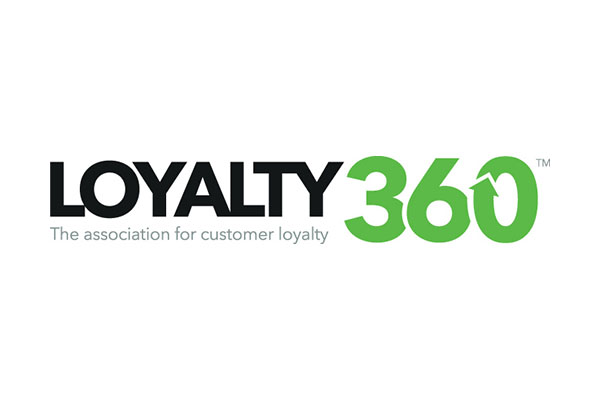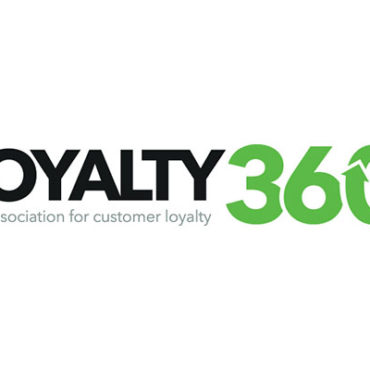[ad_1]
Link to Part 1: https://loyalty360.org/Content-Gallery/Daily-News/Best-Practices-for-Revamping-a-Loyalty-Program-%E2%80%93-P
It would be easy for brands that have a successful loyalty program in place to simply leave it be and let it do the work for them. However, in today’s climate, it takes more to retain customers who could easily become bored with a program and lose interest in a rewards program that remains stagnant. But how can a brand determine if its loyalty program has become stagnant and needs a refresh?
Loyalty360 spoke with supplier members for their insights and perspectives on ways brands should best incorporate updates to their loyalty programs, including how often to make updates and ways brands can best update on a budget.
Refreshing On a Budget
Not all brands have the financial backing or resources for elaborate restructuring. It is at that point when they need to be creative and come up with more cost-effective ways to refresh their loyalty offerings.
Brendan Boerbaitz, Deloitte Senior Manager, always recommends that brands start with their consumers’ needs at the forefront. “And despite the marketplace being saturated with talk on emerging tech like Metaverse & NFTs, these are not the program experiences that most consumers currently expect or value most in the world of loyalty,” he points out. “It's still mastering the basics that move the needle.”
“Content is a great way to refresh a loyalty program,” suggests Joe Pino, Senior Vice President, Strategy & Solution, at Clutch. “Images can be changed for the season, or simply changed for a new look. Copy can ALWAYS be changed, and works well to remind customers that there are real people at your company who are talking to them and thinking about them as individuals! Pay special attention to emails, subject lines, the content and placement of calls to action or other avenues that are being ignored or are underperforming. Address those first.”
“Offer unique rewards, not just ‘free stuff,’” suggests Steve Palladino, Chief Growth Officer at Group FiO. “Offer rewards with intrinsic value, gift cards and cash. It’s also important to socialize your rewards program to move your brand from ‘legacy loyalty’ to ‘cult loyalty.’”
Deloitte recently ran its annual survey of US consumers, and discovered five drivers that largely hold true for programs across all industries:
- Financial value
- Program simplicity and ease
- Personalized experiences and rewards
- An accessible and enjoyable digital experience
- Access to premium non-financial benefits that offer exclusivity
Jillian Dimoff, Strategic Account Executive at Cheetah Digital, recommends the most logical first step might be to do an asset inventory analysis. She asks, “What do you have that has a low cost and a high perceived value in your arsenal that we can leverage within the program? Another option would be to take a holistic view of your discount and coupon strategy. Are you providing offers to all customers even non-loyalty customers? We may want to wrangle those into the program because we are providing benefits that customers haven’t earned, and we want more known, profitable customers. Finally, there are other ways we can provide value with soft benefits that don’t need to be accounted for on your books. There are a lot of possibilities here.”
Nancy Gordon, Chief Product Officer, Loyalty & Rewards at Bakkt, offers several ways that brands can refresh their loyalty offerings. One way is to evolve their rewards structure across rewards or across tiers. Bakkt can work with brands to monitor and evolve their “Return on Rewards Investment (RORI)” by managing their rewards economics to drive engagement with members.
She gives this example: a financial services company might evolve the points required to redeem for merchandise during the holiday season to capture the significant demand there.
Attracting and aligning value with like-minded partners is another way Gordon suggests a cost-effective refresh, saying, “Loyalty partnerships are a strong strategy to deliver new program benefits with limited cost. For example, Delta and Starbucks have recently partnered for mutual benefit and it’s very likely that the cost of providing that benefit to Delta members is either shared or taken on fully by Starbucks.”
Clutch also suggests brands promote free services they may already have, and reminding customers about them. Offer experiences that amplify the experience such as free gift wrapping, curbside pickup, even snacks or beverages during shopping.
“In terms of offers, brands looking to add interest without increasing cost can focus on rewarding valuable behaviors with limited-time offers,” Pino explains. “For example, refer a friend to the program and gain early access to fall apparel. Fill out a survey and pick up a free gift in-store (brand swag, excess inventory, $5 gift card – the value of which is likely to be exceeded upon redemption).”
Ravi Srinivasan, President and CEO of Group FiO, suggests brands introduce gamification aspects into the program to incorporate fun ways to collect Zero Party Data. “Make target achievement like a coupon threshold or a tier level a big deal with excitement that is virtual,” he says.
Taking the First Step
For a brand that has never updated its loyalty program, it can be difficult to determine the first update that should be incorporated.
“If a program has never been updated, chances are that it is a one size fits all program with little focus on the individual customer experience,” says Pino. “And once the customer experience goes stale, brands are forced to compete on price and that can turn a revenue-positive program into a drain on margin and resources.”
Srinivasan warns brands to stay away from “New and Improved,” and instead, focus on what is in it for the customer. He advises brands to talk more about how the customer wins and gets rewards.
Says Sue Frech, Founder & CEO of Vesta, “A great first step in updating your loyalty program is building an emotional connection among those participating, and offering rewards and engagement that are experience and value-driven.”
One of the best ways to understand what that looks like is to ask consumers for feedback. Inviting consumers to share their opinions through surveys, polls, or discussions will deliver a wealth of insights. Using this data, brands can design new and interesting experiences, and reward consumers in between purchases.
Palladino recommends brands, “Offer points or benefits to customers. And in return, they redeem points for discounts, free products, rewards, or insider perks. The goal is to motivate repeat purchases and build trust between customer and business.”
At Clutch, they recommend a review of the customer journey from start to finish – beginning with the signup. Are you getting customers to enroll? Are they earning their first reward? Are they recognizing the value of that reward? Are they repeating the process? Wherever there is friction, there is an opportunity to make an update:
- Enrollment – is your value proposition for joining the program a good one? Do customer care – and do they care enough to sign up? What are your competitors offering?
- Redemption – Introduce new ways to redeem and consider changing the requirements if they seem out of reach. Offering points in exchange for experiences, free or expedited shipping, free returns, or free swag can motivate customers to take action.
- Retention – this is where refreshing the program comes in. Create new rewards, focus on seasonal calendars – holidays, back to school, summer break. Look at what competitors are doing – are you on the same playing field? How can you stand apart?
“Before we make any updates, we first need to make sure your stakeholders are aligned” Dimoff stresses. “You want everyone bought in at the start because each department has its own goals and KPIs. There’s nothing more frustrating than getting down the path and realizing you have to start from square one again.”
Second, she asks what data do brands have to work with to inform the new program design? “Do we have any customer panels or research to tell us what would resonate with customers? We want to ensure the program changes align with current customer behaviors and future desired behaviors. For instance, if we are changing the earn structure from spend to frequency (or vice versa), how does that impact customers? Are we going to be enabling “bad behaviors” and/or not recognizing our top customers? If we provide non-transactional earn, we need to attribute a value and probably some kind of a cap to avoid opportunities to game the system. There’s a lot to consider.”
From there brands can determine what benefits need to be updated, which channels they are enabling, and of course the overall financial model.
“And don’t forget we want a test and learn approach to make sure we are setting the brand up for success by providing customers with the best experience possible,” she adds.
Over the last six months, Deloitte has been seeing market leaders take decisive steps to rethink loyalty program strategies, experiences, and operating models and advocate for the investments required to position for sustainable advantage over the long-term.
Adrian Trzaskus, Digital Transformation Practice Lead Deloitte, explains, “They’re anchoring on a differentiated ambition by looking ‘inward’ to intentionally choose how loyalty will drive enterprise value (beyond the obvious KPIs) and ‘outward’ to understand how loyalty will capitalize on macro shifts in the marketplace around them (e.g., rising inflation, consumer waste, shift in spending toward services). When brands make explicit choices about the role loyalty will play for the enterprise, marketplace, and member, everything else becomes clearer.”
“Segmentation is another impactful way to take a stale program to the next level,” says Pino. “Customers have little tolerance for being treated as one of the masses and simple segmentation exercises can go a long way. Are they an online or in store shopper? What is their average spend – based on this what types of incentives and offers make sense for them? How long have they been a customer – do they deserve some special treatment for their patronage?”
Gordon suggests the first update a brand should incorporate into its loyalty program is among these:
Aligning the program investment to program value. It’s critical for a brand to understand the different segments of its program members in terms of value and evolving its proposition members in terms of value and evolving.
Segments in the top 20% of customers may be already maxed out on wallet share for the brand, so recognition and appreciate benefits are important to retain these segments without overinvesting. Many hotel and airline brands have long provided “soft” benefits such as priority boarding, early check-in and so forth.
Segments in the next 50% of members are where brands can gain the most value by increasing share, so offering new features that motivate customers to increase their business are a good first addition. Retail brands like Gap and Macy’s provide incremental promotions and advanced sale awareness to the “mass” of members in order to achieve this result.
Evaluation of tiers or aligning of tiers. It’s important to get tiers right. Nothing is more challenging (as Delta or Nordstrom will likely tell you) than changing them once they get too crowded.
One thing we’re challenging our clients to think about is longitudinal loyalty. The recognition of loyalty often happens each January due to technology constraints – we think it would be an improvement if brands recognized ongoing, rather than calendar-based loyalty from their customers.
[ad_2]
Source link




